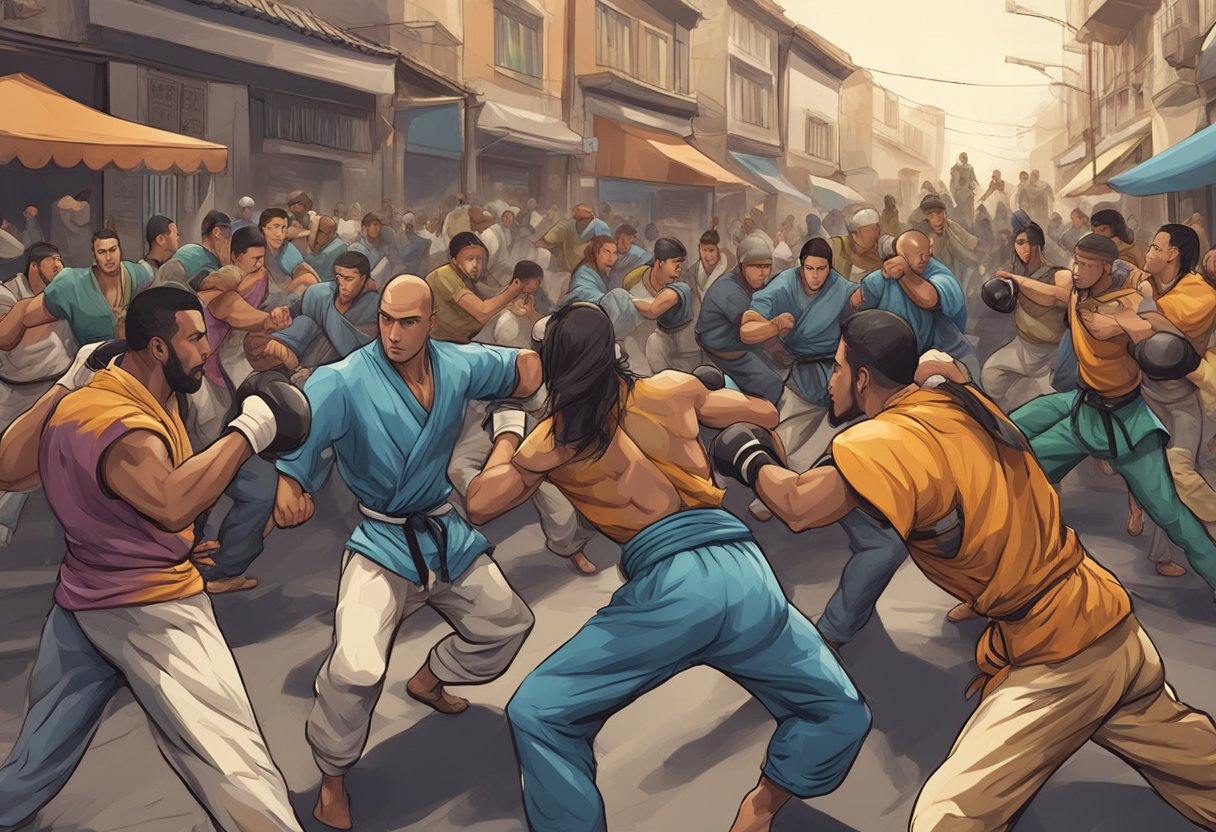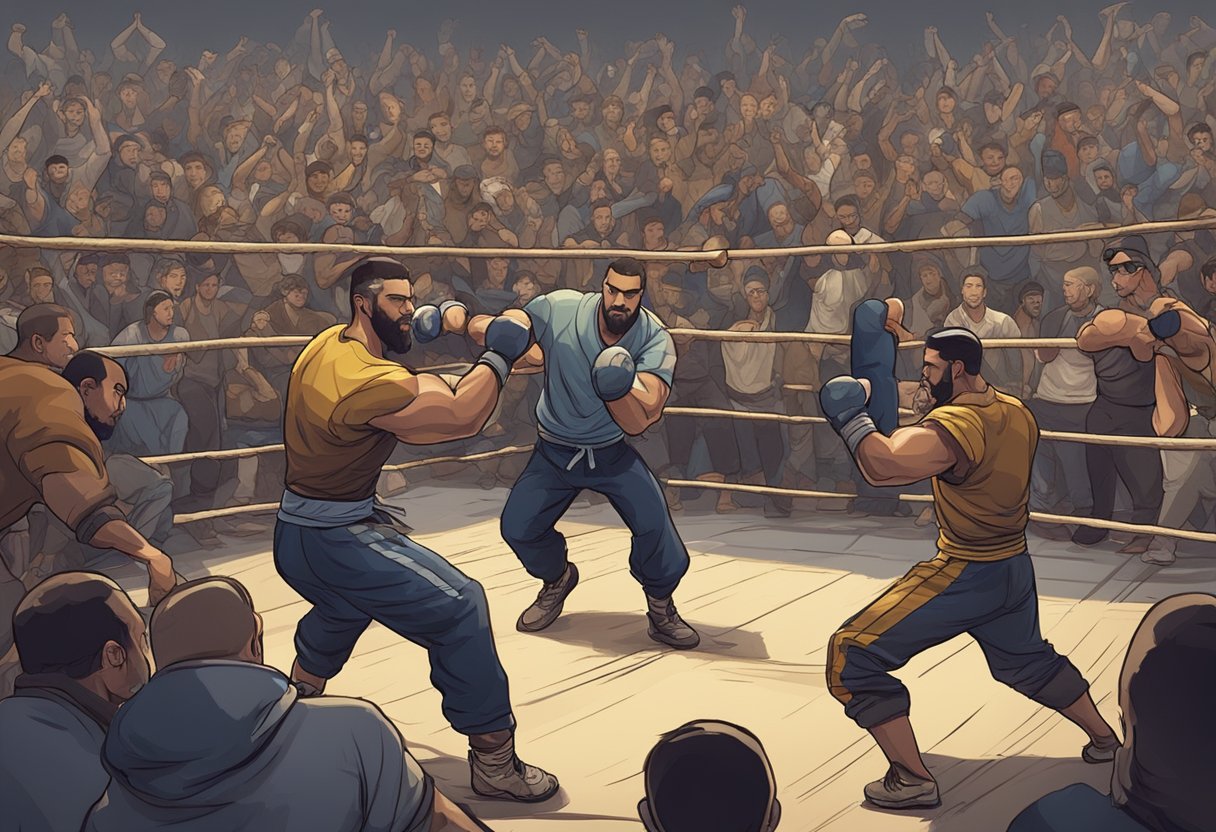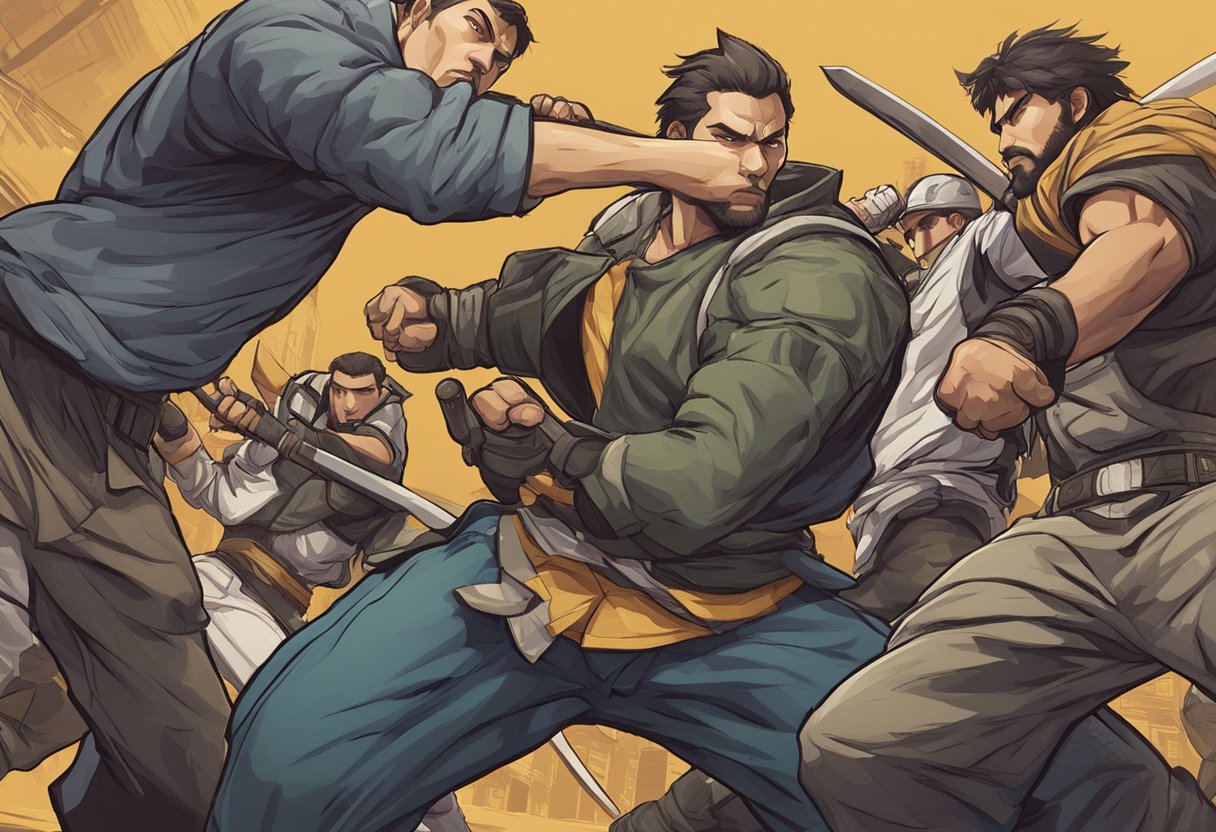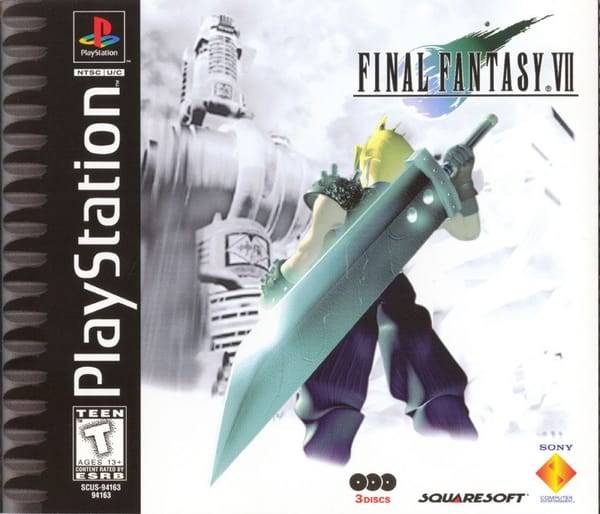Looking to dominate in 'Street Fighter II'? This guide unpacks the special moves, combos, and winning strategies you need to become a true champion. "Street Fighter II," developed by Capcom, revolutionized the fighting game genre with its diverse range of characters and move sets. Whether you're a seasoned player or a newcomer, knowing the right moves and strategies can significantly enhance your gameplay experience.

The game features iconic characters like Ryu, Ken, Chun-Li, and many more, each with unique abilities. The move list for all characters includes everything from Ryu’s Hadouken to Chun-Li’s Lightning Kick. Learning how to execute these moves can give you a competitive edge, especially in intense battles against friends or online opponents.
Effective strategy goes beyond just knowing the special moves. Understanding character strengths and weaknesses, as well as mastering advanced combinations and tactics, is key to victory. Guides like those on Street Fighter II StrategyWiki provide detailed insights, helping players refine their skills and outsmart their competition. Dive into the world of "Street Fighter II" and elevate your game to the next level!
Essential Basics
Get to know the core elements of "Street Fighter II" in this guide. Learn about the game's setup, character choices, and essential controls to help you start your journey as a fighter.
Game Overview
"Street Fighter II: The World Warrior" launched in March 1991. It set the standard for arcade fighting games with its unique characters and competitive gameplay. Players must win two out of three rounds by depleting their opponent’s health. Each round lasts 99 seconds or ends when a player is knocked out.
The game includes eight selectable fighters, each with distinct special moves. Ryu and Ken, for instance, have identical moves but differ in speed and reach. This makes mastering each character crucial for success in battles.
Character Select
The original game offers eight characters to choose from:
- Ryu
- Ken
- Chun-Li
- Guile
- Blanka
- E. Honda
- Dhalsim
- Zangief
Each fighter has its strengths and weaknesses. For example, Chun-Li is fast but has low health, while Zangief is slow but very powerful. Selecting a character that suits your playstyle is important. Ryu and Ken are often recommended for beginners due to their balanced skill sets and ease of use.
Controls and System Mechanics
The control scheme is straightforward yet comprehensive. The game uses an eight-directional joystick paired with six buttons. These include three punch buttons (light, medium, heavy) and three kick buttons (light, medium, heavy).
Basic Controls:
- Move: Joystick
- Punch: Light Punch (LP), Medium Punch (MP), Heavy Punch (HP)
- Kick: Light Kick (LK), Medium Kick (MK), Heavy Kick (HK)
- Block: Hold joystick away from opponent
Executing special moves often involves a combination of joystick directions and button presses. For example, Ryu’s Hadouken is performed by moving the joystick quarter-circle forward and pressing a punch button.
Mastering these controls is essential for executing combos and special moves. Understanding the block mechanic can also be a game-changer in defensive play. This balanced system ensures that strategy and skill go hand in hand. For more detailed move lists, check out this resource on Street Fighter II Moves.
Character Strategies
In "Street Fighter II," each character has unique moves and strategies for winning. Understanding these can give players an edge in battles.
Ryu
Ryu is known for his balanced fighting style and powerful projectiles. His iconic Hadouken is great for pressuring opponents from a distance. Shoryuken works as an excellent anti-air move.
- Hadouken (Fireball): Quarter-circle forward + punch
- Shoryuken (Dragon Punch): Forward, down, down-forward + punch
- Tatsumaki Senpukyaku (Hurricane Kick): Quarter-circle back + kick
Ryu's combination of projectile attacks and quick movement make him versatile. Players should master his Hadouken and Shoryuken to control the flow of the game.
Ken
Ken shares many moves with Ryu but is more aggressive. His Shoryuken deals more damage and has a higher reach. Hurricane Kick can cross up opponents.
- Shoryuken: Forward, down, down-forward + punch
- Tatsumaki Senpukyaku: Quarter-circle back + kick
- Hadouken: Quarter-circle forward + punch
Ken’s moves encourage offensive play. Players should use his Shoryuken to surprise opponents and Hurricane Kick for mix-ups.
Chun-Li
Chun-Li is one of the fastest characters with excellent aerial attacks. Her Hyakuretsukyaku (Lightning Kick) can deal substantial damage if unhindered. Spinning Bird Kick aids in both offense and defense.
- Hyakuretsukyaku (Lightning Kick): Rapidly press kick buttons
- Spinning Bird Kick: Charge down, then up + kick
- Kikoken (Projectile): Charge back, then forward + punch
Her speed allows for quick combos and mixing up opponents. Utilizing her rapid kicks and aerial attacks can keep the opponent on their toes.
E. Honda
E. Honda excels at close-range combat with his strong and fast moves. His Hundred Hand Slap is effective for pressure. Sumo Headbutt can close the gap quickly.
- Hundred Hand Slap: Rapidly press punch buttons
- Sumo Headbutt: Charge back, then forward + punch
- Sumo Splash: Charge down, then up + kick
E. Honda's power lies in his ability to pin opponents down. Use his fast slaps and headbutts to break through defenses and manage space effectively.
Advanced Techniques
Mastering advanced techniques in Street Fighter II involves understanding combos fundamentals, special moves, and super combos. These elements can make a huge difference in your gameplay, enabling you to outmaneuver and outstrike opponents effectively.
Combos Fundamentals
Combos are sequences of attacks that connect with each other, creating a string of hits that leave your opponent with little to no time to react. To execute successful combos, timing is crucial. Practicing in training mode can help you nail the timing between moves.
Basic combo starters include light punches or kicks. These can be followed by medium or heavy attacks for higher damage. For example, with Ryu, you could start with a light punch, follow up with a medium punch, and finish with a Shoryuken.
Combos can be extended by canceling normal moves into special moves. This technique, known as "cancelling," is vital for creating more complex and damaging combinations. Spend time learning which normal moves can be canceled into special moves for each character.
Special Moves and Super Combos
Special moves are unique attacks that require specific inputs. For instance, Ryu’s Hadouken is executed by moving the joystick in a quarter-circle forward and pressing the punch button. Similarly, Chun-Li’s Spinning Bird Kick involves holding down, then pressing up along with the kick button.
Understanding special moves is fundamental, but mastering super combos can take your game to the next level. Super combos are usually more powerful versions of special moves, often requiring a full or nearly full super meter to execute. For example, Sagat's Tiger Knee becomes more devastating when used as a super combo, causing more damage and better control over your opponent’s position.
To maximize your effectiveness, pay close attention to your super meter and look for opportunities to unleash super combos when they can turn the tide of battle. Practice these advanced techniques to create a seamless blend of combos and special moves that keep your opponent guessing.
Characters From Around the World
In Street Fighter II, players can choose from a diverse roster of fighters, each with unique moves and strategies. Here we spotlight three characters known for their distinct fighting styles and key moves.
Guile and His Iconic Sonic Boom
Guile, a major from the U.S. Air Force, is known for his strict discipline and iconic moves. His Sonic Boom is a powerful projectile attack that can be executed by charging back and then quickly moving forward and pressing a punch button. This move is great for controlling space and pressuring opponents from a distance.
Another notable move of Guile's is the Flash Kick. This high-powered anti-air attack is performed by charging down and then quickly moving up and pressing a kick button. It is highly effective against jump-ins and aerial attacks. Guile's gameplay focuses on defense and counter-attacks, making him a solid choice for players who enjoy methodical and strategic play.
Zangief's Grappling Mastery
Zangief, the Red Cyclone from Russia, is a grappling specialist. His signature move, the Spinning Piledriver, is devastating. To perform it, players rotate the joystick in a full circle and then press a punch button. This move can deal significant damage and is a key part of Zangief's close-range combat strategy.
He also has the Banishing Flat, a spinning lariat move that allows him to close the distance quickly and nullify projectiles. Zangief's fighting style emphasizes powerful grabs and throws. Players need to get up close and personal to maximize his potential, making him perfect for those who love aggressive, relentless combat.
Dhalsim's Yoga Fire Control
Dhalsim, the flexible fighter from India, uses his unique abilities to control and zone his opponents. His Yoga Fire move, executed by performing a quarter-circle forward motion and pressing a punch button, sends a slow-moving fireball across the screen. This helps Dhalsim keep opponents at bay and control the battlefield.
Another key move is the Yoga Flame, which is a more powerful fire-based attack that has a wider range. Performed similarly to the Yoga Fire but with different positioning, it can deal more damage and hit multiple times. Dhalsim's long limbs give him exceptional reach, making him effective at both long and mid-range combat. Players who like strategic zoning will find Dhalsim a fascinating character to master.
In summary, these characters offer varied gameplay experiences, catering to different playstyles and strategies. Whether you prefer Guile's disciplined approach, Zangief's brute strength, or Dhalsim's strategic zoning, there's something for every player.
Unlockable Secrets
In "Street Fighter II," players can unlock hidden characters and find various Easter eggs and glitches that add extra fun to the game. This section reveals some of these secrets to help you gain an edge and enjoy hidden features.
Hidden Characters
One of the exciting secrets in "Street Fighter II" is unlocking hidden characters. Akuma is a well-known secret character in later versions of the game. To unlock Akuma in "Super Street Fighter II Turbo," you need to input a specific code at the character selection screen. Highlight Ryu for three seconds, T. Hawk for three seconds, Guile for three seconds, then Cammy for three seconds. Go back to Ryu, wait three seconds, and press Start and all three punch buttons simultaneously. Akuma will appear as a playable character.
Here's another secret: In "Ultra Street Fighter II: The Final Challengers," there are special character colors you can unlock. For example, on the character select screen, go to Ryu and highlight color 1, then cancel, then highlight Ken color 9, Sagat color 8, and M. Bison color 7. Choose the random select box and press specific buttons. This combination honors the game's original release in 1987.
Easter Eggs and Glitches
"Easter eggs" and glitches add a bit of unexpected fun to "Street Fighter II." One well-known Easter egg involves Vega's claw. In some versions of the game, if Vega loses his claw during a fight, you can pick it up and use it. This adds a twist to battles and a bit of chaos.
Glitches also make for interesting gameplay. For example, in some instances, characters can perform moves that overlap each other. This could lead to unexpected scenarios where both fighters freeze momentarily. Another glitch involves M. Bison; if timed correctly, his Psycho Crusher move can pass through certain characters without causing damage.
These Easter eggs and glitches are part of what has kept "Street Fighter II" interesting for gamers over the years. Whether it's surprising new moves or unexpected gameplay quirks, they provide an extra layer of fun and challenge to the experience.
Expanding the Roster

In "Street Fighter II," more characters were introduced to offer players new dynamics and enhance the fighting experience.
New Challengers in Super Street Fighter II
"Super Street Fighter II" added four new challengers: Cammy, Dee Jay, Fei Long, and T. Hawk.
Cammy is a British fighter specializing in strong kicks and agile movements. Her quick moves make her a fan favorite.
Dee Jay is a Jamaican kickboxer with a joyful personality. His moves blend rhythm and power, offering a unique gameplay style.
Fei Long channels Bruce Lee with his kung fu fighting style and fast punches. He is perfect for players who love quick combos.
T. Hawk is a large Native American warrior. His fighting style includes powerful throws and aerial attacks.
These new characters brought fresh strategies and added more depth to the game.
Boss Characters and Their Impact
Boss characters in "Street Fighter II" included M. Bison, Sagat, Balrog, and Vega.
M. Bison is the game's final boss. His Psycho Crusher is deadly and requires precise timing to counter.
Sagat, a Muay Thai fighter, is known for his towering height and strong Tiger Uppercut.
Balrog is a boxing expert. His straightforward but potent punches make him a tough opponent.
Vega is a masked cage fighter. His agility and claw attacks require players to stay on their toes.
These bosses not only provided a challenge but also added a layer of prestige to beating the game by defeating them.
Version Differences

"Street Fighter II" has seen many versions, each bringing its own unique changes. Key differences include updated characters, new moves, and gameplay adjustments.
From Champion Edition to Turbo
The Champion Edition was the first major update to the original game. It introduced the concept of mirror matches, allowing players to choose the same character. This version also balanced the skill sets of the characters, creating a more competitive environment. Players could now access the four boss characters: Balrog, Vega, Sagat, and M. Bison.
Next came Turbo, officially known as Street Fighter II: Hyper Fighting. This version increased the game's speed, making battles quicker and more intense. New moves were added for various characters. For instance, Chun-Li received her Kikoken fireball, and Dhalsim gained a Yoga Teleport. These additions gave players more tactical options and enriched the fighting experience.
Super Street Fighter II Turbo and Its Legacy
Super Street Fighter II was another significant update. It introduced new characters: Cammy, Dee Jay, Fei Long, and T. Hawk, expanding the roster to sixteen fighters. Each character came with unique moves that added more depth to the game. Additionally, an improved combo system was implemented, making it easier for players to string together attacks.
Super Street Fighter II Turbo brought even more changes. The game introduced the Super Combo system, where players could fill a meter to unleash a powerful move. This version also included the hidden character Akuma, who was playable under specific conditions. It became a fan favorite for its dynamic gameplay and strategic complexity. For more details on the characters and moves, you can visit this comprehensive move list.
Console Ports
"Street Fighter II" has seen various console ports, each with its strengths and weaknesses. Notably, the SNES port emerged as a popular choice due to its accessibility and fidelity to the arcade original. This section explores how the game adapts to the SNES and compares it across multiple platforms.
Adapting to the SNES
The SNES port of "Street Fighter II" managed to capture the essence of the arcade version with impressive accuracy. Developing for the Super Nintendo Entertainment System meant making some compromises in terms of graphics. Still, the game maintained smooth animations and vibrant character sprites.
Players found the controls adapted well to the SNES controller. Special moves and combos were responsive, and the button layout was intuitive. The selectable characters in the SNES version mirrored the arcade, giving fans access to their favorite fighters without missing any key elements.
Another notable aspect was the sound and music. While not identical to the arcade version, the SNES audio quality was commendable. Each character's theme and the in-game effects retained the charm that players loved. This made the SNES port a significant success among fans of the series.
Comparing Across Platforms
When comparing "Street Fighter II" across different platforms like the Genesis and SNES, several differences stand out. The SNES version boasted better graphics with more vibrant colors and detailed backgrounds. This graphical edge gave the SNES an advantage in presenting the game's aesthetic.
On the flip side, the Genesis version had a slight edge in terms of gameplay speed. Some players preferred this faster pace, finding it more suitable for executing combos and special moves. However, the Genesis gamepad had fewer buttons, making it a bit harder to manage some of the more complex controls.
Both ports included all the playable characters from the arcade version. Yet, the SNES port often received praise for its smoother animations and more faithful reproduction of character sprites. This factor alone made it the preferred choice for many fans seeking an experience closer to the arcade original.
In conclusion, each console port had its strengths, but the SNES version often stood out for its balanced mix of graphical fidelity and responsive gameplay.
Culture and Impact
"Street Fighter II" has made a lasting mark on both the gaming industry and pop culture. Its influence extends to later games in the series and crosses over into other media and major competitions.
Influence on Later Street Fighter Games
"Street Fighter II" set the stage for future titles like Street Fighter III and Street Fighter IV. One of its key contributions was refining the combo system, allowing players to string together moves in satisfying sequences.
The game also introduced characters and storylines that would evolve in later titles. Characters like Ryu and Chun-Li became iconic, appearing in nearly every iteration. The mechanics established here were so well-received that many were retained in future games, providing a consistent experience for players.
Crossover Appeal and Competitions
"Street Fighter II" broke out of the arcade and found a place in other forms of entertainment. It was a pioneer in crossover games, featuring characters in titles from rival companies like Tekken and SNK’s King of Fighters. This broadened its appeal and introduced the characters to new audiences.
The competitive scene flourished because of its balanced gameplay and deep mechanics. Tournaments like EVO became annual celebrations of skill, with "Street Fighter II" often making appearances. These events further cemented its place as a cornerstone of fighting game competitions. Players from around the world continue to compete in "Street Fighter" games, showcasing the lasting impact of this classic.
Getting Competitive
To excel in Street Fighter II, it's important to build your skills and understand the competitive scene. Joining tournaments and ranking up can help you gain recognition and improve your gameplay.
Building Your Skills
Start with mastering basic moves for key characters like Ryu, Ken, and Chun-Li. Learn their special moves and practice executing them smoothly. It's crucial to understand the timing and distance for each move.
Use training mode extensively. This lets you practice combos and test different attack strategies without the pressure of a real match. Memorize the combo sequences and rehearse them until they become second nature.
Watch professional matches on platforms like YouTube. Observe how top players control space, execute combos, and adapt to different characters and fighting styles. Emulate their techniques and integrate them into your gameplay.
Tournaments and Ranking Up
Participating in tournaments is a great way to test your skills. Local arcades and online communities often host Street Fighter II tournaments. These events can help you gain experience and earn achievements.
Online ranking systems track your progress and match you with players of similar skill levels. Compete regularly to improve your rank and measure your improvement.
Joining a community or forum dedicated to fighting games can also be beneficial. Players often share tips, strategies, and game updates. Titles like Mortal Kombat have similar communities, which can offer insights that are relevant across fighting games.
By continually challenging yourself against skilled players and keeping up with community discussions, you can make significant progress in the competitive scene.











Member discussion